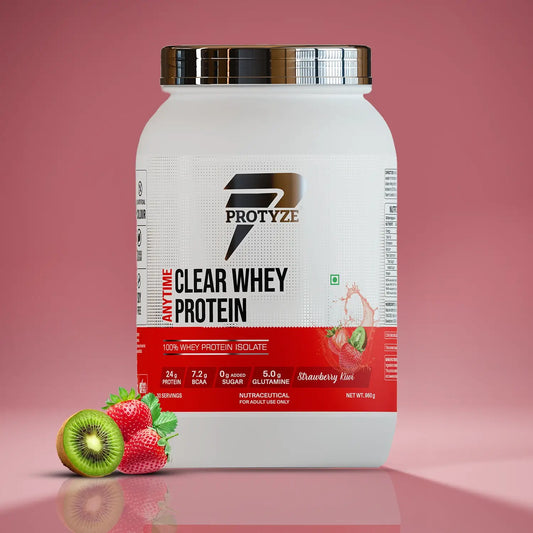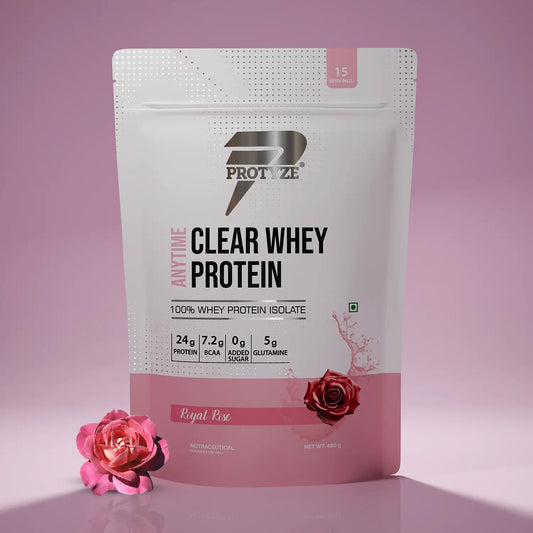Losing weight can feel like a puzzle with too many pieces. Everyone seems to have a different idea about what works—some say cut carbs, others say skip meals. But the truth is, the best diet is one that fits your life—one that helps you lose weight, keeps it off, and doesn’t make you feel hungry or tired all the time.
In this blog, we’re going to explain the top 10 diet plans for effective and sustainable weight loss in simple, easy English. Each plan is loved by people around the world, backed by science, and made to help you reach your goals without giving up everything you enjoy. We’ll also show how Protyze Diet Clear Whey Protein can fit in naturally to make things easier.
Why Sustainable Weight Loss Is the Goal
Quick fixes like starvation diets might drop pounds fast, but they’re hard to keep up, and the weight usually comes back. A sustainable diet is different—it’s about making changes you can live with for a long time. It keeps you healthy, gives you energy, and helps you lose weight without feeling punished. Adding something like Protyze Diet Clear Whey Protein (15g protein + 4.5 bn strains of probiotics) can support that by keeping your muscles strong and your stomach happy while staying low in calories.
Now, let’s explore the top 10 diets!
1. Mediterranean Diet
The Mediterranean diet comes from how people eat in sunny places like Greece, Italy, and Spain. It’s all about fresh, natural foods—think fruits like apples and oranges, vegetables like tomatoes and spinach, whole grains like brown rice or oats, nuts like almonds, seeds, olive oil, and lean proteins like fish or chicken. You don’t have to avoid entire food groups, and the meals are full of flavor.
How It Helps
This diet skips processed stuff like sugary snacks or fast food, which helps your body shed fat. The fiber from fruits and veggies fills you up, and healthy fats from olive oil and nuts give you energy without making you feel heavy. Research says it’s great for your heart and can help you lose weight steadily over time.
Who It’s For
People who love tasty, colorful food and don’t want strict rules telling them what they can’t eat.
How to Follow It
- Breakfast: Oatmeal with fresh berries and a drizzle of honey.
- Lunch: A big salad with grilled fish, tomatoes, and olive oil dressing.
- Dinner: Baked chicken with roasted veggies like zucchini and peppers.
-
Snacks: A handful of almonds or a piece of fruit like an apple.
Keep meals simple, use fresh ingredients, and cook with olive oil instead of butter.
Pros
- Easy to stick to because it’s flexible and delicious.
- Good for your heart, brain, and overall health.
- No boring meals—everything has flavor.
Cons
- Fresh foods can cost more than packaged ones.
- Takes time to cook if you’re always on the go.
2. Intermittent Fasting (IF)
Intermittent fasting (IF) isn’t about what you eat—it’s about when you eat. One common way is the 16/8 method: fast for 16 hours (like 8 PM to 12 PM the next day) and eat during an 8-hour window (12 PM to 8 PM). Another option is 5:2: eat normally for 5 days a week, then limit yourself to 500–600 calories on 2 days.
How It Helps
By eating less often, you naturally take in fewer calories without tracking every bite. Fasting also lets your body rest from digesting food, so it starts burning stored fat for energy. It’s a simple way to lose weight without complicated meal plans.
Who It’s For
People who don’t mind skipping meals and want a no-fuss approach.
How to Follow It
- 16/8 Example: Skip breakfast, have lunch at noon (like chicken and veggies), dinner at 7 PM (like fish and salad), and stop eating by 8 PM. Fast until noon the next day.
-
5:2 Example: Eat normally Monday to Friday. On Saturday and Tuesday, stick to small meals like a salad or soup (500–600 calories total).
During fasting, drink water, black coffee, or plain tea to stay hydrated.
Pros
- No foods are banned—you can eat what you like in your window.
- Works with busy schedules.
- Boosts fat-burning naturally.
Cons
- Hunger can be tough, especially at first.
- Not ideal if you love big breakfasts or late-night snacks.
Practical Tip
Break your fast with Protyze Diet Clear Whey Protein mixed in water. It’s light, refreshing, and gives you protein without overloading calories.
3. Keto Diet
The keto diet is high in fats, moderate in protein, and super low in carbs. You eat foods like eggs, cheese, butter, avocados, coconut oil, and meat—but skip bread, rice, pasta, potatoes, and sugary treats.
How It Helps
When you cut carbs, your body switches to “ketosis.” That means it burns fat for energy instead of sugar from carbs. It’s a fast way to lose fat, especially in the first few weeks, and the high fat keeps you full.
Who It’s For
People who love fatty foods and don’t mind giving up carbs like bread or sweets.
How to Follow It
- Breakfast: Eggs cooked in butter with bacon.
- Lunch: Salad with avocado, chicken, and olive oil dressing.
- Dinner: Steak with steamed broccoli and a pat of butter.
-
Snacks: Cheese cubes or a handful of macadamia nuts.
Keep carbs under 20–50g a day (check labels!).
Pros
- Quick weight loss at the start.
- Fat keeps hunger away.
- Lots of rich, tasty foods.
Cons
- Missing carbs can be hard long-term.
- “Keto flu” (feeling tired or foggy) can hit in the first week.
Practical Tip
Don’t overdo protein—it can stop ketosis. Stick to small portions of meat or eggs.
4. Plant-Based Diet
A plant-based diet focuses on foods from plants—fruits, vegetables, beans, lentils, nuts, seeds, and whole grains. You can go fully vegan (no meat or dairy) or just cut back on animal foods.
How It Helps
Plant foods are low in calories and high in fiber, so you feel full without eating too much. It’s also good for your heart, energy, and even the planet.
Who It’s For
People who want to lose weight and feel healthier overall.
How to Follow It
- Breakfast: Oatmeal with banana and chia seeds.
- Lunch: Bean salad with tomatoes, cucumber, and lemon dressing.
- Dinner: Stir-fried veggies with tofu and brown rice.
-
Snacks: Carrot sticks with hummus or an orange.
Swap meat for beans or lentils, and use plant milk like almond milk.
Pros
- Great for health and the environment.
- Lots of food options.
- Keeps you satisfied.
Cons
- Needs planning to get enough protein.
- Dairy fans might miss cheese or yogurt.
Practical Tip
Add Protyze Diet Clear Whey Protein to a smoothie—it’s a light, plant-friendly protein boost.
5. Paleo Diet
The Paleo diet is like eating how humans did long ago—meat, fish, nuts, fruits, and veggies. No grains (like wheat or rice), dairy, or processed foods allowed.
How It Helps
It cuts out sugar and junk food, so you lose fat and get steady energy from natural sources. It’s simple and focuses on whole foods.
Who It’s For
Meat lovers who don’t mind skipping grains or dairy.
How to Follow It
- Breakfast: Scrambled eggs with fruit.
- Lunch: Grilled chicken with a side of roasted veggies.
- Dinner: Baked fish with sweet potato fries (baked, not fried).
-
Snacks: A handful of walnuts or an apple.
Stick to foods you could hunt or gather—no bread or milk!
Pros
- No calorie counting needed.
- Natural and clean eating.
- Good for energy levels.
Cons
- No grains or dairy can feel restrictive.
- Meat can get expensive.
6. Low-Carb Diet
A low-carb diet cuts down on carbs (bread, pasta, sweets) but isn’t as extreme as keto. You eat more protein, healthy fats, and low-carb veggies like spinach or zucchini.
How It Helps
Fewer carbs mean less sugar spikes, which controls hunger and burns fat. It’s a flexible middle ground.
Who It’s For
People who want an easy plan without going all-in on keto.
How to Follow It
- Breakfast: Eggs with avocado.
- Lunch: Turkey wrap with lettuce instead of bread.
- Dinner: Chicken with cauliflower rice.
-
Snacks: Cheese or nuts.
Keep carbs under 100g a day—focus on protein and veggies.
Pros
- Simple and flexible.
- Keeps you full.
- Steady weight loss.
Cons
- Carb cravings can sneak up.
- Needs some meal prep.
7. DASH Diet
DASH (Dietary Approaches to Stop Hypertension) was made to lower blood pressure, but it’s great for weight loss too. You eat fruits, veggies, lean meats, whole grains, and cut salt and sugar.
How It Helps
It’s balanced and filling, so you lose weight without feeling hungry or weak.
Who It’s For
People who want a healthy, long-term plan.
How to Follow It
- Breakfast: Oatmeal with fruit and a sprinkle of nuts.
- Lunch: Turkey sandwich on whole-grain bread with veggies.
- Dinner: Grilled fish with quinoa and steamed broccoli.
-
Snacks: Yogurt or an apple.
Use less salt—flavor with herbs instead.
Pros
- Good for your whole body.
- Easy to follow long-term.
- No extreme cuts.
Cons
- Cutting salt takes effort.
- Weight loss might be slower.
8. Volumetrics Diet
This diet focuses on low-calorie, high-volume foods—like soups, salads, and fruits—so you can eat a lot without gaining weight.
How It Helps
You stay full on fewer calories, so you naturally eat less overall.
Who It’s For
People who hate feeling hungry while dieting.
How to Follow It
- Breakfast: Big bowl of fruit with a little yogurt.
- Lunch: Veggie soup with a side salad.
- Dinner: Grilled chicken with steamed veggies.
-
Snacks: Watermelon or cucumber slices.
Fill up on water-rich foods like broths or greens.
Pros
- Lots of food to eat.
- Simple idea.
- Stops hunger.
Cons
- Takes time to prep big meals.
- Less focus on protein.
9. Weight Watchers (WW)
Weight Watchers uses a points system. Every food gets points based on calories, fat, and fiber. You get a daily limit and can eat anything within it.
How It Helps
It teaches you portion control and smart eating without banning foods.
Who It’s For
People who like structure and group support.
How to Follow It
- Breakfast: Cereal with milk (check points).
- Lunch: Sandwich with lean meat and veggies.
- Dinner: Pasta with sauce—just watch portions.
-
Snacks: Fruit or a small treat.
Use their app to track points and stay under your limit.
Pros
- Flexible and fun.
- Community helps you stay motivated.
- Builds good habits.
Cons
- Tracking can feel like a chore.
- App costs money.
10. Flexible Dieting (IIFYM)
Flexible dieting tracks “macros” (protein, carbs, fats) instead of calories. You can eat what you love if it fits your macro goals.
How It Helps
It’s customizable and helps you keep muscle while losing fat.
Who It’s For
Fitness fans who want food freedom.
How to Follow It
- Set macros (e.g., 100g protein, 50g carbs, 40g fat).
- Breakfast: Eggs and toast.
- Lunch: Chicken with rice.
- Dinner: Burger with a small bun.
-
Snacks: Protyze Diet Clear Whey Protein shake.
Track with an app like MyFitnessPal.
Pros
- No food is off-limits.
- Great for muscle goals.
- Teaches balance.
Cons
- Needs tracking skills.
- Takes time to learn.
Tips for Success
- Drink Water: 8–10 glasses a day keeps you full and boosts fat loss.
- Move More: Walk, dance, or lift weights to burn calories.
- Add Protein: Try Protyze Diet Clear Whey Protein for a light, low-calorie boost.
Conclusion
The best diet is one you can enjoy and keep doing. These top 10 diet plans give you options—whether you love food freedom or simple rules. Pair them with Protyze Diet Clear Whey Protein—India’s best clear whey for weight loss—and you’re set for success. Start today and feel the difference!
FAQs
1. What’s the easiest diet plan for beginners?
The Low-Carb Diet or Weight Watchers (WW) are great starting points. Low-Carb just means cutting back on bread and sweets while eating more protein and veggies—it’s simple and flexible. WW uses a points system to guide you without banning foods, so you learn as you go. Both don’t need tons of rules to get started.
2. Which diet helps me lose weight the fastest?
The Keto Diet or Intermittent Fasting (IF) can show quick results. Keto cuts carbs so your body burns fat fast, often dropping pounds in the first week. IF limits when you eat, reducing calories naturally. But fast doesn’t always mean sustainable—pick what you can keep up!
3. Can I lose weight without feeling hungry?
Yes! Try the Volumetrics Diet or Plant-Based Diet. Volumetrics fills you up with low-calorie foods like soups and fruits, so you eat big portions without extra calories. Plant-Based uses fiber-rich foods like beans and veggies to keep hunger away.
4. What’s the best diet for long-term weight loss?
The Mediterranean Diet or DASH Diet are top choices. They’re balanced—lots of fruits, veggies, and lean proteins—and easy to follow for years. They’re not just about weight; they boost your health too, making them sustainable.
5. How does protein help with weight loss?
Protein keeps your muscles strong while you lose fat, and it makes you feel full longer. That’s why diets like Flexible Dieting (IIFYM) focus on it. A scoop of Protyze Diet Clear Whey Protein (15g protein, low calories) can help you hit your protein goals without heavy shakes.
6. Can I eat my favorite foods and still lose weight?
Yes, with Weight Watchers (WW) or Flexible Dieting (IIFYM)! WW lets you eat anything within your points limit—like pizza or chocolate. IIFYM tracks macros, so you can fit in treats if they match your protein, carb, and fat goals. It’s all about balance.
TL;DR
Losing weight isn’t about extreme diets—it’s about finding a plan that fits your lifestyle. This guide covers the top 10 diet plans for effective, sustainable weight loss, including the Mediterranean Diet, Intermittent Fasting, Keto, Plant-Based, Paleo, Low-Carb, DASH, Volumetrics, Weight Watchers (WW), and Flexible Dieting (IIFYM). Each has its own benefits, from fast fat loss (Keto, IF) to long-term health (Mediterranean, DASH). No matter which diet you choose, adding Protyze Diet Clear Whey Protein helps you stay full, maintain muscle, and support weight loss without excess calories. Pick a plan that works for you, stay consistent, and enjoy your journey!





